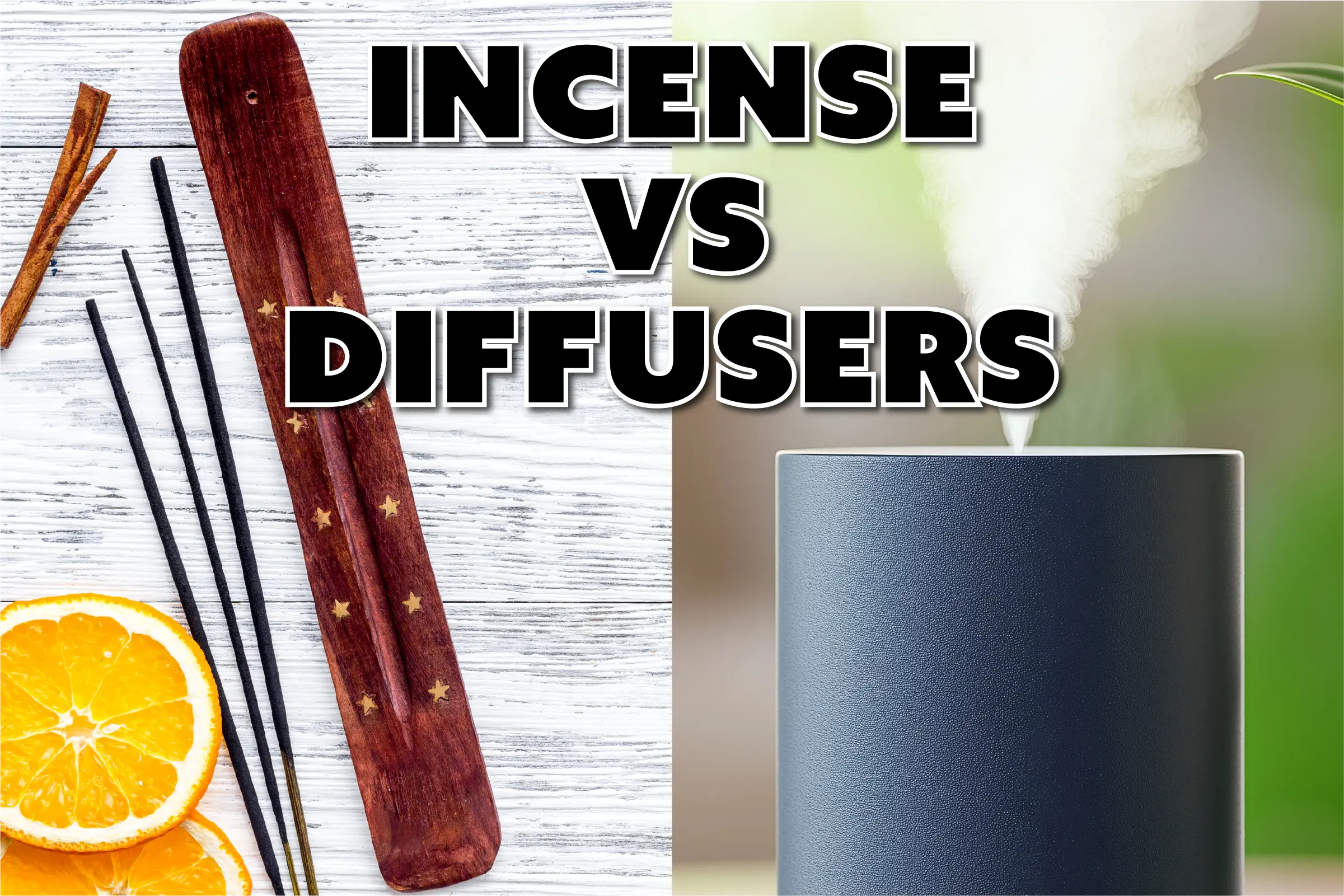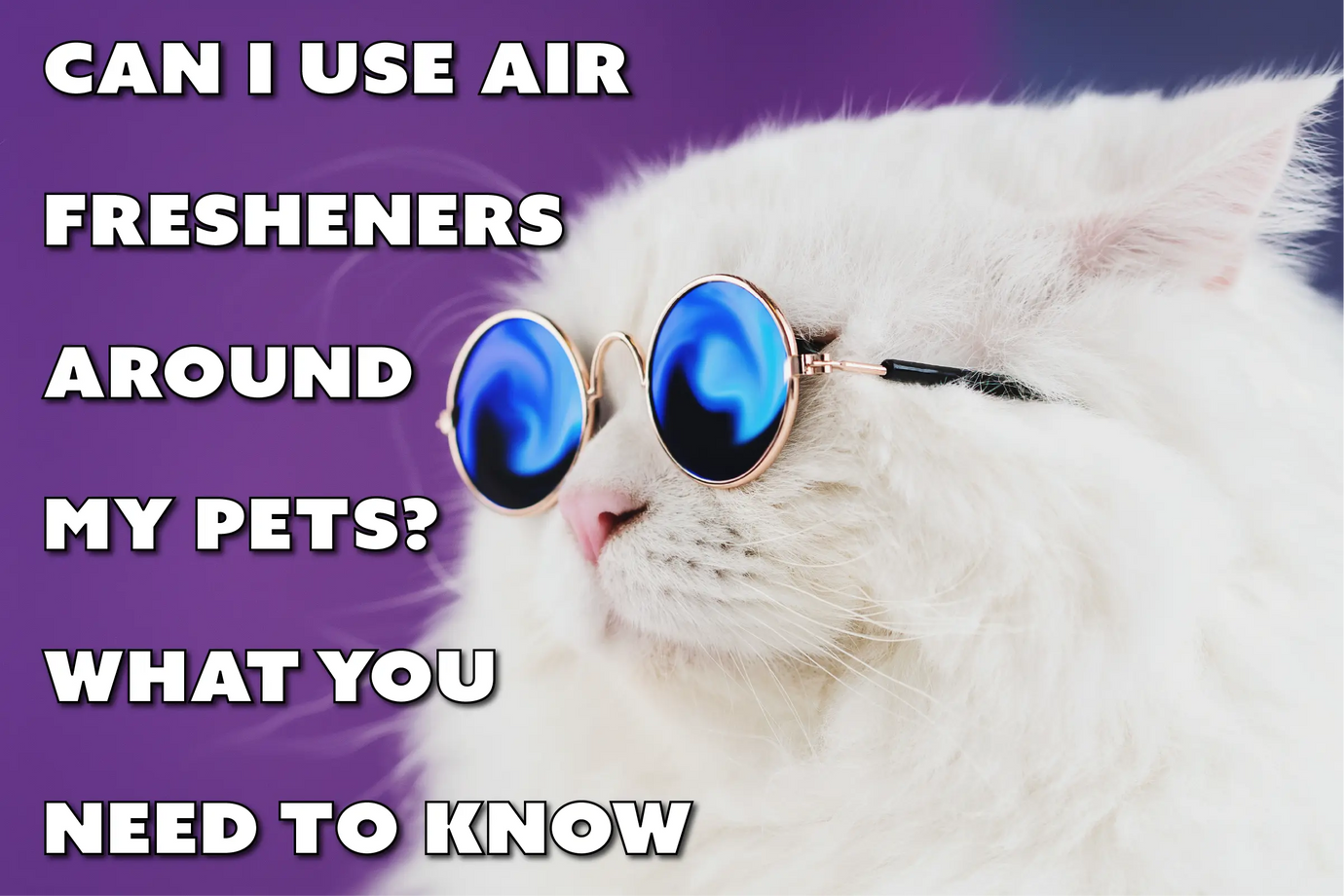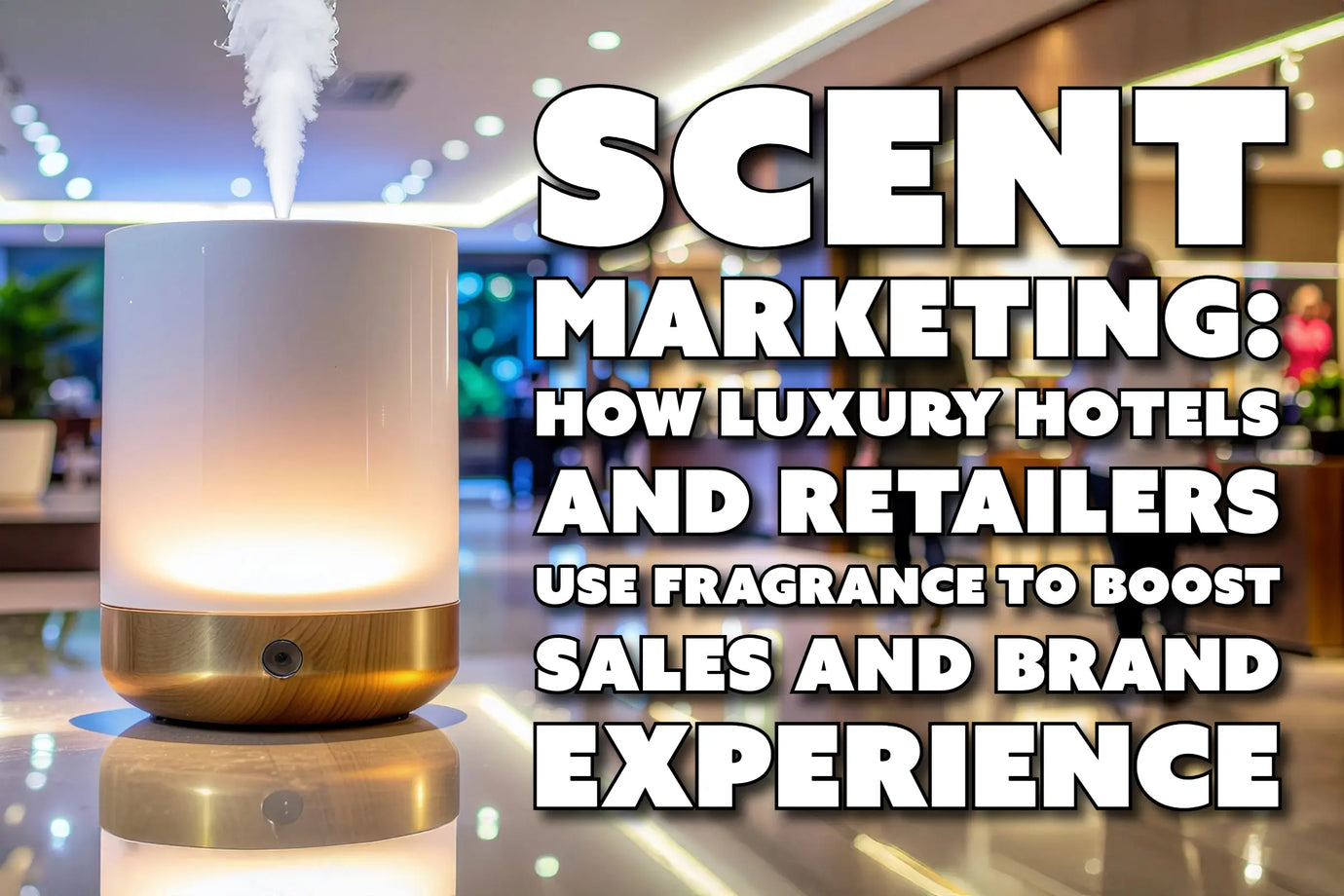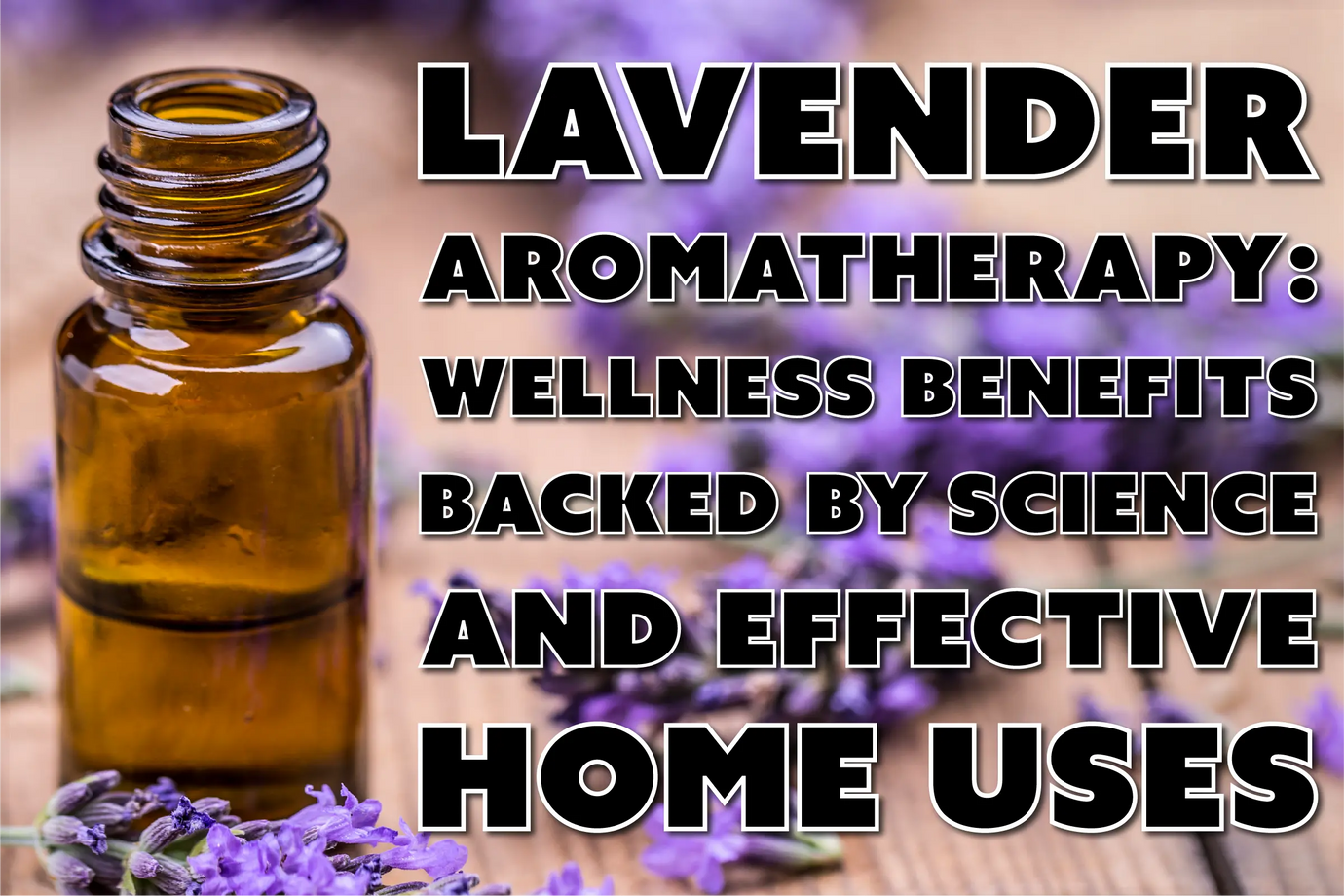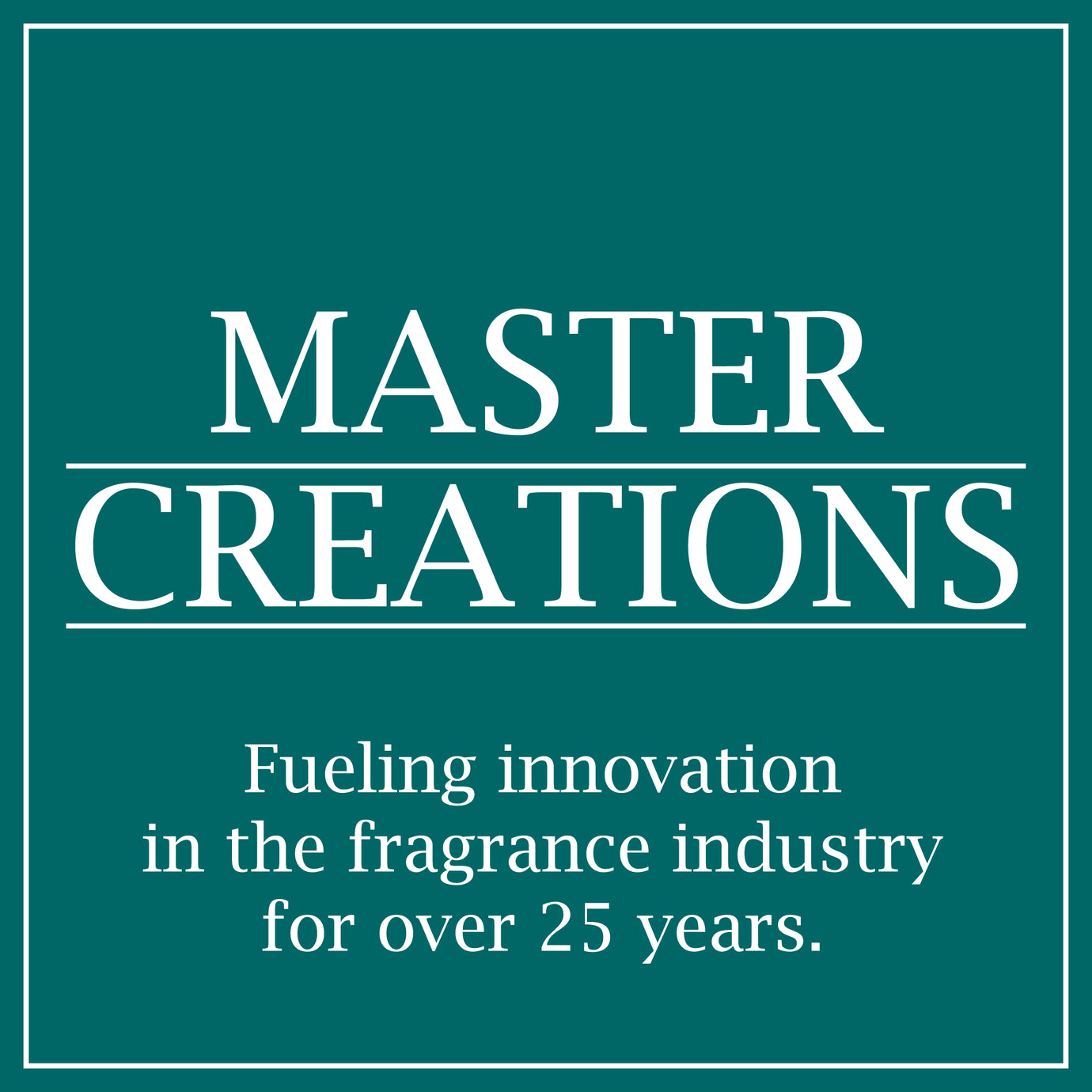Incense vs. Diffusers: What’s the Best Way to Naturally Scent Your Space?
When it comes to keeping your space smelling fresh and feeling welcoming, there’s no shortage of options. High-test air freshener sprays like BluntPower are great for anyone looking for a quick and easy way to add a burst of fragrance, while scented candles, diffusers, and incense are perfect for those wanting a bit of ambiance in their space alongside an incredible aroma.
In this guide, we’ll take a deeper look at two iconic methods of scenting your home: incense sticks & ultrasonic aroma diffusers, examining their history, how they work, how they’re made, and different use cases to help you determine which one’s a better match for your space, preferences, and lifestyle.
🌿 What Is Incense?
Let’s start old-school by diving deep into how incense works and its storied history.
The Fragrant History of Incense

One of the churches at Mamshit, a site along the historical Incense Route. Creative Commons.
The burning of incense is one of the oldest and most enduring scenting practices in human history. Its earliest use can be traced back to ancient Egypt circa 2000 BCE, where it was often burned during religious rituals under the belief that the fragrant smoke carried prayers to the gods. They also used incense as part of their historically noteworthy embalming practices and daily purification ceremonies. Ingredients like frankincense and myrrh, two of the most famous resins used in incense, were so valuable they were once traded along exclusive caravan routes, known collectively as the Incense Route (Smithsonian Magazine).

A continent away in Asia, incense became a central component in spiritual practices for many cultures. In India, for example, it’s long been used in Ayurvedic medicine and Hindu rituals. In China and Japan, incense started gaining popularity around the 6th century CE when Buddhist monks adopted it for meditation and temple ceremonies (Encyclopedia Britannica). By the 15th century, the Japanese had even developed Kōdō, the "Way of Incense" or “Way of the Fragrance.”, a refined art form centered around appreciating incense with mindful intention (Traditional Kyoto).

Incense arrived in Europe, specifically Greece, as early as the 8th century BCE, where it was burned as offerings to the gods and for spiritual protection against demons. Its use continued to spread during the Roman era, where it replaced the age-old tradition of burning fragrant woods during religious sacrifices. By the medieval period, incense was even burned in Christian churches to sanctify the air and symbolize spiritual purification, a practice that endures to this day (Encyclopedia Britannica).
Today, incense is used for everything from spiritual rituals to relaxation and aromatherapy, making it a global tradition that has stood the test of time.
Modern Incense: How It’s Made and How It Works

Modern incense sticks are typically made by compacting joss powder, a combustible binding agent made by crushing the bark of the Litsea glutinosa tree, around a bamboo stick and allowing it to harden. The sticks are then dipped in a blend of essential oils or fragrance oils and set out to dry.

When using incense to scent a space, start by lighting the end of the stick on fire until ember begins to form. Then extinguish the flame and let the rest of the stick slowly burn away. This will release a beautiful aromatic smoke stream into the air over the next 30-90 minutes, giving your space an instant scent and relaxing ambiance. You’ve probably caught its vibe in yoga studios, meditation rooms, or even your friend’s dorm room back in the day.
Pros of Incense:
- 🧘 Aromatherapy on demand – Sets a calming, grounding mood almost instantly.
- 👃 Strong scent payoff – Fills a room quickly and can mask intense odors.
- 🌿 Natural vibe – Often made from herbs, resins, and essential oils.
Cons of Incense:
- 🚬 Smoke – Not ideal for folks with asthma, allergies, or pets sensitive to air quality.
- ⏱️ Shorter lifespan – One stick lasts 30-90 minutes, then it’s done.
- 🔥 Fire hazard – Requires open flame, which isn’t great for forgetful minds.
💨 What Is a Diffuser?
Aroma diffusers work by dispersing essential fragrance oils into the air, either through reeds, ultrasonic vibrations, or heat. They’re ideal for those who desire a consistent, long-lasting fragrance without smoke.

The History of Aroma Diffusion
The history of aroma diffusers is rooted in the ancient human desire to scent and purify living spaces. Early civilizations, including the Egyptians, Greeks, and Romans, used clay pots, oil burners, and steam infusions to disperse natural fragrances from herbs and resins. But the concept of a modern diffuser began to evolve much later, with the invention of reed diffusers in the mid-20th century. Though there's no widely recognized "inventor," reed diffusers are believed to have originated in Europe, offering a flame-free alternative to incense and candles. They work through capillary action, where porous reeds absorb fragrance oil and naturally release it into the air—a simple, elegant solution still popular in homes today.

Fast forward to the 1980s and early 1990s, when Japan, already a leader in electronics and wellness tech, began developing ultrasonic diffusers. These devices use high-frequency vibrations to break a mixture of water and essential oils into a fine mist. The innovation provided a clean, quiet, and effective way to humidify the air while infusing it with scent. While exact patent details vary by region and brand, companies like Muji and Zojirushi were among the early adopters of this technology in consumer wellness products. The ultrasonic diffuser quickly gained global popularity, especially in the wellness and aromatherapy spaces, for its ability to deliver long-lasting, subtle fragrance without heat or open flames.

More recently, waterless ultrasonic diffusers have taken the spotlight by offering a more powerful and concentrated scent experience than their water-based counterparts. They do this by using high-frequency vibrations to disperse micro-particles of pure, undiluted essential oil or fragrance oil directly into the air, a process known as atomization. This style of diffuser is especially popular in commercial scent marketing and high-end home fragrance systems due to its stronger aroma output, cleaner operation, and lower maintenance. While various companies have contributed to the development of this tech, brands like AromaTech, Master Creations, and Hotel Collection have helped popularize it in the last decade. These modern scent marvels, like those in our Scent Diffuser Collection, truly represent the cutting edge of fragrance innovation by combining function, form, and the latest scent science.
Types of Diffusers:
- Water-Based Ultrasonic Diffusers – Use water + vibration to release scented mist.
- Waterless Ultrasonic Diffusers – Also use vibrations but without the need to dilute your fragrance oils. This delivers a purer & stronger scent experience.
- Reed Diffusers – Use wooden sticks in scented oil—great for subtle, passive scenting.
- Nebulizing Diffusers – No water, just pure oil dispersion using pressurized air (super potent).
Pros of Diffusers:
- 💧 No smoke, no flame – Pet-friendly and safe for small spaces or kids' rooms.
- ⏳ Longer lasting – Diffusers offer a constant, long-lasting source of fragrance. Most models will work for a month or more on a single refill.
- 🕒 Runs on your schedule: Electronic diffusers of all types can usually be set to shut off automatically after a time of your choosing. Some even have app connectivity and can be set to run during specific times on certain days of the week!
- 🌫️ Variable intensity: Most electronic models allow you to change how long and how frequently the diffuser disperses oil.
- 🌬️ Moisturizes air (water-based models only): A bonus for dry climates.
Cons of Diffusers:
- 🧼 Periodic cleaning – Occasionally, you may need to clean your diffuser to keep it running optimally. In waterless ultrasonic models, simply run the diffuser on high settings for 10-15 minutes using a small amount of 90% isopropyl (rubbing) alcohol instead of fragrance oil. This will remove any clogs from the system and get it running like-new. Once done, rinse out any alcohol left in the oil bottle, and voila; you’re back to enjoying one of the best scent experiences on the market today!
- 💡 Power source required – Needs electricity or batteries.
- 🧪 Scent may be lighter – Especially in large rooms or with low oil quality.
💡 Choosing the Best Scenting Method for You
Here's how to decide based on what matters most to you:

👃 Can You Use Both?
Absolutely! Many scent lovers alternate between incense and diffusers depending on their mood or the room they’re in.
Here’s a simple routine:
- Morning or Work Hours: Diffuser with energizing oils like lemon or eucalyptus.
- Evening Wind-Down: Light an incense stick with calming lavender or sandalwood.
Mixing methods is a scent-lover’s dream!
🚫 Scenting Mistakes to Avoid
- Don’t burn incense near curtains or open windows, as smoke gets trapped or lost.
- Using cheap oils: Go for high-quality fragrance or essential oils specifically made for diffusers. We recommend Urban Encounter Scents for Diffusers for a phenomenal, essential oil-based experience!
- Never use non-diffuser-approved oils as they can clog your device.
- Skipping regular maintenance: A little TLC goes a long way towards keeping your diffuser in tip-top shape.
- Don’t ignore scent fatigue. Switch up your oils or incense once in a while!
🙋 Frequently Asked Questions
Q: Are diffusers better for large rooms?
Yes—especially ultrasonic and nebulizing diffusers. They disperse fragrance more evenly over time.
Q: Is incense safe for pets?
Some incense can irritate pets' lungs. Stick with short burn times and good ventilation, or use a diffuser with pet-safe oils instead.
Q: Can I use both a diffuser and incense at once?
Technically yes, but it may be scent overload. Better to space them out throughout the day.
💬 Final Thoughts: Which One Wins?
It all comes down to your lifestyle, scent goals, and safety concerns.
- Want quick, bold fragrance? Go with incense.
- Prefer set-it-and-forget-it scenting? Diffuser’s your move.
- Love both? Mix and match for a full sensory routine.
And if you want something even stronger for eliminating odors in seconds? BluntPower’s sprays are seriously next-level.
Ready to upgrade your scent game?
Check out our full collection of incense, diffusers, and air fresheners at MasterCreationsInc.com—where bold scents and quality vibes live.

